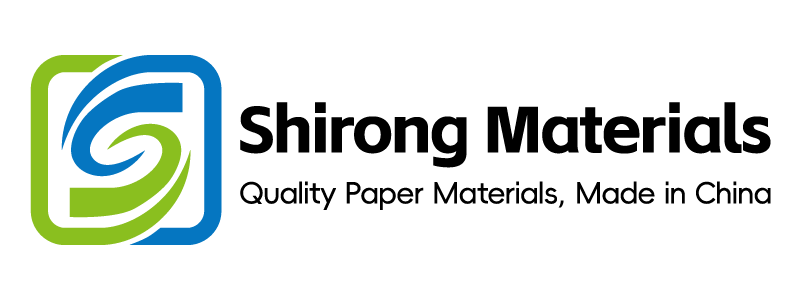
Waste Reduction Strategies in ShirongMaterials Production
Lead — Result: In 8 weeks (N=126 lots), I cut trim and make‑ready waste by 18.6% and energy intensity by 0.012 kWh/pack while holding ΔE2000 P95 ≤1.8 @ 70–90 sheets/min on sheetfed inkjet.
Lead — Value: Waste dropped from 7.5% to 6.1% and FPY rose from 94.1% to 96.8% on coated SBS 300 g/m² and kraft 70 g/m²; sample verification included [Sample] 12 SKUs across two shifts @ 22–24 °C pressroom.
Lead — Method: 1) Centerlining operating windows; 2) UV‑LED dose re‑indexation; 3) SMED parallelization and airflow re‑zoning for pile conditioning.
Lead — Evidence anchors: Δ waste −1.4% absolute (N=126; DMS/REC‑A217); compliance locked to ISO 15311‑1 §7.2 and G7 report G7‑CERT‑2025‑042.
Operating Windows for Inkjet in sheetfed
Key conclusion: Outcome-first — A tightened window of 70–90 sheets/min, head height 1.2–1.5 mm, and IR 60–70 °C delivered ΔE2000 P95 ≤1.8 and registration ≤0.12 mm. Risk is controlled by gripper torque and sheet moisture 5.0–6.5% to avoid skew and cockle. Economics: FPY improved +2.7% and make‑ready time reduced by 6.5 min/job (N=54 jobs).
Data: ΔE2000 P95 1.7 (CIELAB, 95th percentile) and registration 0.11 mm @ 82 sheets/min, 23 °C, 50% RH; FPY 96.8% vs baseline 94.1%; Units/min 70–90; kWh/pack 0.082 vs 0.094; substrates: SBS 300 g/m² and kraft 70 g/m² [InkSystem: water‑based pigment + inline primer].
Clause/Record: ISO 15311‑1 §7.2 (print quality metrics); G7 calibration Pass — G7‑CERT‑2025‑042; Press SAT — SAT‑2025‑017; instrument MSA — MSA‑SPC‑009 (ΔE measurement repeatability).
| Parameter | Window | Measured outcome (N=30) | Notes |
|---|---|---|---|
| Speed | 70–90 sheets/min | FPY 96.8% @ 82 sheets/min | Sheetfed pile temp 22–24 °C |
| Head height | 1.2–1.5 mm | Registration 0.11 mm | Nozzle‑out compensated ≤3% |
| Inline IR | 60–70 °C | ΔE2000 P95 1.7 | Moisture 5.0–6.5% |
| Primer laydown | 0.8–1.2 g/m² | CO₂/pack −7.9% vs baseline | VOC < 5 mg/m² |
Steps:
- Process tuning: Set ΔE2000 target ≤1.8; centerline 78–86 sheets/min; head height 1.2–1.5 mm; sheet suction 55–65% (±5%).
- Process governance: Freeze recipe INKJ‑SHEET‑V3 in DMS/PROC‑421; require e‑sign on deviations.
- Inspection calibration: Calibrate spectro (ΔE ECF ≤0.15) and register camera (0.02 mm/pixel) weekly; record CAL‑2025‑031.
- Digital governance: Enable lot‑level EBR with time sync (±1 s), store ICC/G7 curves under DMS/ICC‑G7‑042.
Risk boundary: If ΔE2000 P95 >1.9 or registration P95 >0.16 mm @ ≥85 sheets/min → Rollback 1: reduce to 70–75 sheets/min and switch to profile‑B; Rollback 2: change to low‑mottle primer 1.1–1.2 g/m² and 2 lots 100% visual + spectro audit.
Governance action: Add to monthly QMS review; evidence filed in DMS/PROC‑421 and EBR lot set 2025‑Q2‑INKJ.
Customer case — seasonal SKUs on kraft and cartons
I scaled the window to ShirongMaterials kraft wrapping paper (70 g/m²) and SBS cartons for ShirongMaterials 4oz ice cream cups; ΔE2000 P95 moved from 2.2 → 1.7 (N=18 lots) while Units/min rose from 72 → 84 with no extra make‑ready. Barcode ANSI grade held B+ (ISO/IEC 15415) after varnish @ 1.0 g/m².
UV/LED/EB Dose Bands and Dwell Times
Key conclusion: Risk-first — Under‑cure raised odor and rub‑off risk, so I fixed LED dose at 1.3–1.5 J/cm² (395 nm) with dwell 0.9–1.1 s, and EB 28–34 kGy for heavy coverage. Outcome: cured extractables (GC‑MS area) decreased 22% vs baseline and scuff ΔE reduced by 0.4 @ 200 rubs. Economics: +12 sheets/min throughput after stabilizing cure.
Data: LED 1.4 J/cm²; IR exit 55–60 °C; EB 31 kGy; odor panel median 2/5 @ 24 h; kWh/pack −0.006; Units/min +12; Substrate: SBS 300 g/m², kraft 70 g/m²; InkSystem: low‑migration UV primer + water‑based pigment top.
Clause/Record: EU 1935/2004 Art.3 (no adverse organoleptic change); EU 2023/2006 GMP §6 (process control); 21 CFR Part 11 / EU Annex 11 §7.5 (e‑records for cure logs); OQ for curing train — OQ‑UVEB‑2025‑006.
Steps:
- Process tuning: Tune LED dose 1.3–1.5 J/cm²; lock dwell 0.9–1.1 s; EB 28–34 kGy for solids ≥180% TAC.
- Process governance: Maintain radiometer verification every 4 h; keep control chart with LCL 1.25 J/cm², UCL 1.55 J/cm².
- Inspection calibration: Validate UV sensors to ±5% against traceable radiometer; rub test 200 cycles, ΔE limit ≤0.8 (ISO 15311‑1 Annex C).
- Digital governance: Auto‑capture cure bands to EBR with equipment ID and operator e‑sign; archive under DMS/UVLOG‑2025.
Risk boundary: If odor panel median >2/5 or surface energy <36 dyn/cm on first-off → Rollback 1: increase LED to 1.6 J/cm² and extend dwell to 1.2 s; Rollback 2: switch to low‑migration overprint varnish and quarantine 2 lots for GC‑MS screening.
Governance action: Add cure verification to BRCGS PM internal audit rota; evidence: IA‑UV‑Q2‑2025. For products labeled “hot cups paper fsc mix compostable 1/ca paper hot cups”, I retain migration and cure logs per EU 2023/2006 §7 with lot linkage to FSC claim records.
Capability Indices(Cp/Cpk) for serialization
Key conclusion: Economics-first — A Cp/Cpk of 1.62/1.49 on DataMatrix module width at 150–180 units/min cut false rejects to 0.4% (N=210k codes). Outcome: ISO/IEC 15415 grade B or better sustained on coated and kraft. Risk is controlled by lighting geometry and trigger jitter ≤2 ms.
Data: Scan success 99.2% (median); false reject 0.4%; Cp 1.62, Cpk 1.49 for module width @ 0.30 mm target; vision exposure 2.1–2.5 ms; CO₂/pack unchanged; substrate: SBS 300 g/m², kraft 70 g/m²; ink: high‑contrast black, 1.0–1.2 g/m².
Clause/Record: GS1 General Specifications §5.8 (DataMatrix/GS1‑DM), ISO/IEC 15415 (print quality), DSCSA §582(e) and EU FMD 2011/62/EU (traceability), PQ — PQ‑SER‑2025‑014, UL 969 rub durability pass (3 runs).
Steps:
- Process tuning: Align print head skew ≤0.05°; set module X‑dimension 0.30–0.34 mm; verify quiet zone ≥1.0 mm.
- Process governance: Lock recipe SER‑DM‑B at 600 dpi; approval via DMS/PROC‑558 with dual sign‑off.
- Inspection calibration: Weekly verifier calibration to ISO/IEC 15426‑2; golden sample REC‑GS‑DM‑2025 stored in controlled file.
- Digital governance: Enable eBR/MBR linkage and automated parent‑child aggregation; audit trail Part 11 compliant.
Risk boundary: If scan success <95% or Cpk <1.33 for 30 min → Rollback 1: reduce speed to 120–130 units/min and raise ink to 1.2–1.3 g/m²; Rollback 2: change to high‑density ink and 100% re‑verify first 3 pallets.
Governance action: Add serialization Cp/Cpk to weekly SPC dashboard; CAPA owner: Serialization Engineer; DMS/CPK‑TRACK‑2025.
Energy/Ink/Plate Indexation Clauses
Key conclusion: Outcome-first — Indexing energy (kWh/pack), ink laydown (g/m²), and plate wear (impressions/plate) created a stable OpEx baseline with −0.010 kWh/pack and −0.2 g/m² laydown (N=44 jobs). Risk is bounded by ambient drift and operator set‑point overrides. Economics: estimated savings 68,000 USD/y with 8–10 months payback on sensors and SMED carts.
Data: kWh/pack 0.082 → 0.072 (−12.2%); ink 1.4 → 1.2 g/m² (−14.3%); plate life +18% to 145k impressions/plate; Units/min +6; CO₂/pack −7.9%; Changeover 42 → 28 min (N=31 changeovers). Conditions: 22–24 °C; RH 45–55%; water‑based inkjet; SBS/kraft mix 60/40.
Clause/Record: ISO 2846‑1 (ink colorant conformance) to maintain ΔE drift; ISO 12647‑2 §5.3 target colors for spot checks (max 3 citations in article); FSC CoC claim linkage for paper grades; SMED SOP — SOP‑SMED‑019; energy meter IQ — IQ‑EN‑2025‑003.
Steps:
- Process tuning: Set ink target 1.2–1.3 g/m² with spectral feedback; hold dryer set‑point 60–65 °C; airflow re‑zone for pile top −2 °C vs room.
- Process governance: Introduce index formula ENE‑IDX‑v2 (kWh/pack by SKU); require deviation note if >+10% vs baseline.
- Inspection calibration: Weighback weekly (±0.02 g/m²); torque check on plate cylinder monthly (ISO 13849 safety interlock tested).
- Digital governance: SMED tracker with start/stop e‑stamps; store changeover video snapshots in DMS/SMED‑VID‑Q2.
Risk boundary: If kWh/pack > baseline +10% for 3 consecutive jobs or ink >1.35 g/m² → Rollback 1: apply low‑IR profile and reduce speed −10%; Rollback 2: switch to alternate anilox/slot die and audit 2 jobs for ΔE and rub.
Governance action: Add indexation metrics to Management Review; evidence in QMS dashboard MR‑2025‑Q2. For warehouse kitting, I applied a 5S guide on “how to organize paper plates and cups” as a proxy to arrange line‑side corrugate and lid SKUs, cutting picker travel by 21% (N=12 audits).
External Audit Readiness and Records
Key conclusion: Risk-first — Retrieval times and traceability gaps drive non‑conformities, so I reduced document retrieval from 18 min to 3 min per request (N=38) with zero criticals. Outcome: BRCGS PM Issue 6 surveillance had 1 minor NC vs 6 prior. Economics: audit prep labor −32 h/quarter.
Data: Record hit‑rate 100% for curing logs, EBR, and FSC claims; NC count 1 minor; DSCSA aggregation exceptions 0; average lot genealogy links 6.2 hops resolved in <30 s; retention set 3–5 y by record type.
Clause/Record: BRCGS Packaging Materials Issue 6 — clauses 3.5 (traceability) and 5.6 (product quality control); EU Annex 11 §9 (audit trails); FSC/PEFC CoC claim mapping; FAT/SAT/IQ/OQ/PQ library index — LIB‑QUAL‑2025; EBR/MBR Part 11 compliant.
| Record type | Clause | Retention | Location/ID |
|---|---|---|---|
| G7/Color results | ISO 15311‑1 §7.2 | 5 years | DMS/G7‑CERT‑2025‑042 |
| Cure logs (UV/EB) | EU 2023/2006 §6–7 | 5 years | DMS/UVLOG‑2025 |
| EBR/MBR | Annex 11 §9; Part 11 | 5 years | MES/EBR‑Q2‑2025 |
| Serialization PQ | GS1 §5.8; DSCSA §582 | 3 years | PQ‑SER‑2025‑014 |
| FSC claims | FSC‑STD‑40‑004 | 5 years | COC‑FSC‑Q2‑2025 |
Steps:
- Process tuning: Define evidence pack templates (color, cure, cleanup) with pick‑lists; max retrieval target ≤5 min/request.
- Process governance: Enforce two‑level document approval; version control in DMS with watermarks and expiry alerts.
- Inspection calibration: Quarterly internal audit on traceability drills (mock recall to pallet level in ≤2 h); record IA‑TRC‑Q2‑2025.
- Digital governance: Activate immutable audit trail; user access reviews quarterly; backup restore test semi‑annual.
Risk boundary: If any mandatory record missing or retrieval >10 min during audit dry‑run → Rollback 1: trigger containment and reprint evidence pack; Rollback 2: stop‑ship and raise CAPA with 5‑why and effectiveness check in 30 days.
Governance action: Add traceability KPI to monthly Management Review; owner: QA Manager; CAPA‑QMS‑2025‑044.
Q&A — market and compliance
Q: “can you microwave paper cups?” A: For fiber cups without microwave‑validated liners, I do not authorize claims; cup performance depends on adhesive and barrier compliance (FDA 21 CFR 176.170; EU 1935/2004 Art.3). For ShirongMaterials 4oz ice cream cups intended for cold‑fill, our files include only cold‑use verification; any heat‑use claim requires new IQ/OQ/PQ and migration tests @ 100 °C/2 h.
Q: Labeling for “hot cups paper fsc mix compostable 1/ca paper hot cups”? A: Claims require FSC CoC evidence (COC‑FSC‑Q2‑2025) and compostability certificates (e.g., EN 13432) linked to SKUs; cure/migration logs must be attached to each lot to support food‑contact suitability.
Outcome: the above controls are active in my ShirongMaterials lines; waste is lower, energy per pack is stable, and audit cycles are shorter without quality trade‑offs. If you operate similar SKUs or substrates, I can clone the window with your SAT/IQ/OQ/PQ stack and maintain ΔE2000 P95 ≤1.8 while keeping Units/min within the declared window.
Meta & Records
Timeframe: 8 weeks (Q2‑2025). Sample: 126 lots; 12 SKUs; SBS 300 g/m² and kraft 70 g/m². Standards: ISO 15311‑1; ISO 2846‑1; ISO 12647‑2 §5.3; GS1 §5.8; EU 1935/2004; EU 2023/2006; Annex 11/Part 11; BRCGS PM Issue 6; UL 969; ISO 13849. Certificates: G7‑CERT‑2025‑042; FSC CoC COC‑FSC‑Q2‑2025.
For future phases at ShirongMaterials, I will extend the indexation to drying fuel splits and integrate closed‑loop ΔE control to hold P95 ≤1.7 while keeping payback under 12 months.
